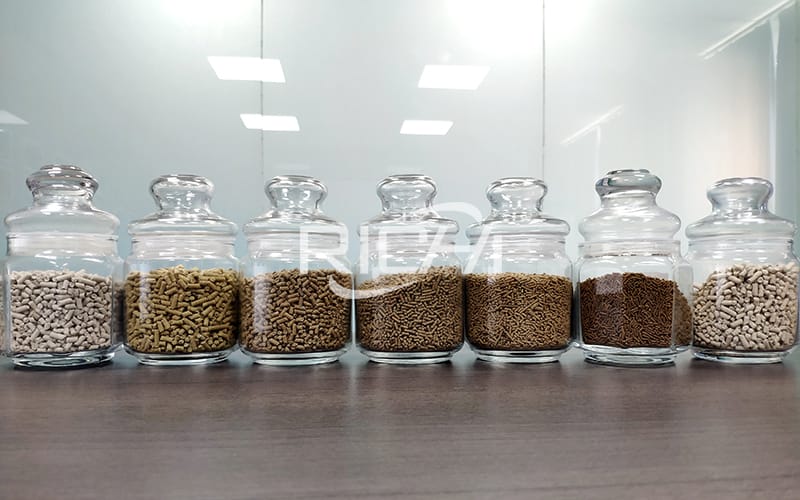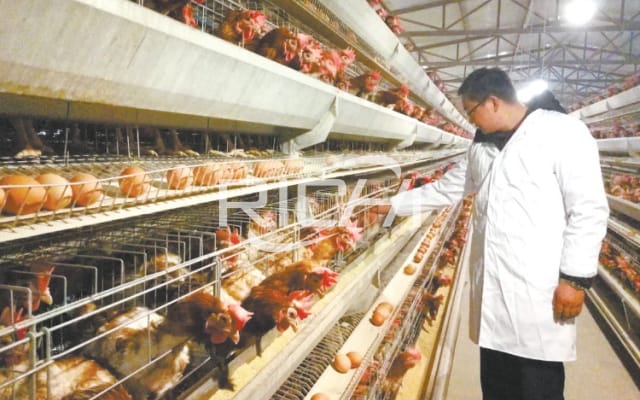Feed Pellet Size in Poultry Production
The size of animal feed pellets is often overlooked in poultry production. During processing, laying hen feed plants often cannot guarantee uniform pellet size and a fully mixed ratio of ingredients. Variations in grinding and crushing methods lead to differences in particle distribution, which—despite similar overall nutrition—affect feed digestion, absorption, and bird performance. Feed manufacturers should regularly evaluate feed particle size and distribution to reduce such impacts.

1. Impact of Feed Particle Size on the Digestive System
- Larger pellets promote muscle stomach (gizzard) development and increase intestinal length.
- Large pellets stay longer in the gizzard, are ground into smaller pieces, then move to the small intestine—extending enzyme action time.
- Longer intestinal villi increase the surface area for nutrient absorption.
- Feeding only fine powder shortens the gizzard, enlarges the glandular stomach, and reduces intestine length—negatively affecting digestion.
2. Ideal Chicken Layers Feed Pellet Size
- Size should increase with beak, gizzard, and digestive organ development.
- Layers prefer large pellets, and this preference increases with age.
| Age Stage | Recommended Pellet Size | Notes |
|---|---|---|
| 0–6 weeks | 1–3 mm (powder/granules) | Uniform nutrients; avoid prolonged powder feeding to prevent underdeveloped gizzard/intestine |
| Pre-lay | Powder with 55–85% particles at 1–3 mm; GMD 1200 μm | Add 2–4 mm stone powder pellets to support eggshell quality |

3. Pellet Size of Layer Feed
- Too many fine particles
- Reduce feed intake and nutrient absorption
- Increase dust in the chicken house
- Too many coarse particles
- Birds selectively eat large pellets
- Increase risk of feed separation
- Best pellet feeding practices
- Provide a 3–4 hour noon gap to encourage consumption of fine pellets
- Add at least 0.5% oil or liquid fat to help bind fines
- Use large or coarsely crushed feed in hot weather to stimulate intake
4. Selective Feeding of Laying Hens
- Layer feed is a mix of large pellets (energy—broken corn) and small pellets (AAs, phosphorus, vitamins, minerals).
- Excessive large pellet intake can cause nutrient imbalance (Vit A/D, riboflavin, Na, lysine, methionine deficiency).
- Too many feedings or large portions cause fines to accumulate in troughs.
- Noon empty-trough management (2–4 h) helps hens consume fines.
- Daily balanced intake of both sizes supports nutritional balance.
5. Method for Determining Feed Pellet Size
- Follow USDA standard: feed passes through 14 sieves for 10 minutes.
- Calculate geometric mean diameter (GMD) and uniformity (SD or CV).
- For compound feed, CV should be <10%.
- Primarily applied in large feed processing plants.
6. Impact of Crushing Process on Feed Particle Size
- Particle size changes multiple times during crushing.
- Main factor: crushing method—affects uniformity and size.
- Protein meals and premixes often require little size reduction.
- Cereals (corn, wheat) require milling—different grains yield different sizes under same conditions.
- The grain corn hammer mill produces varied sizes depending on hammer shape, speed, and screen hole size.


